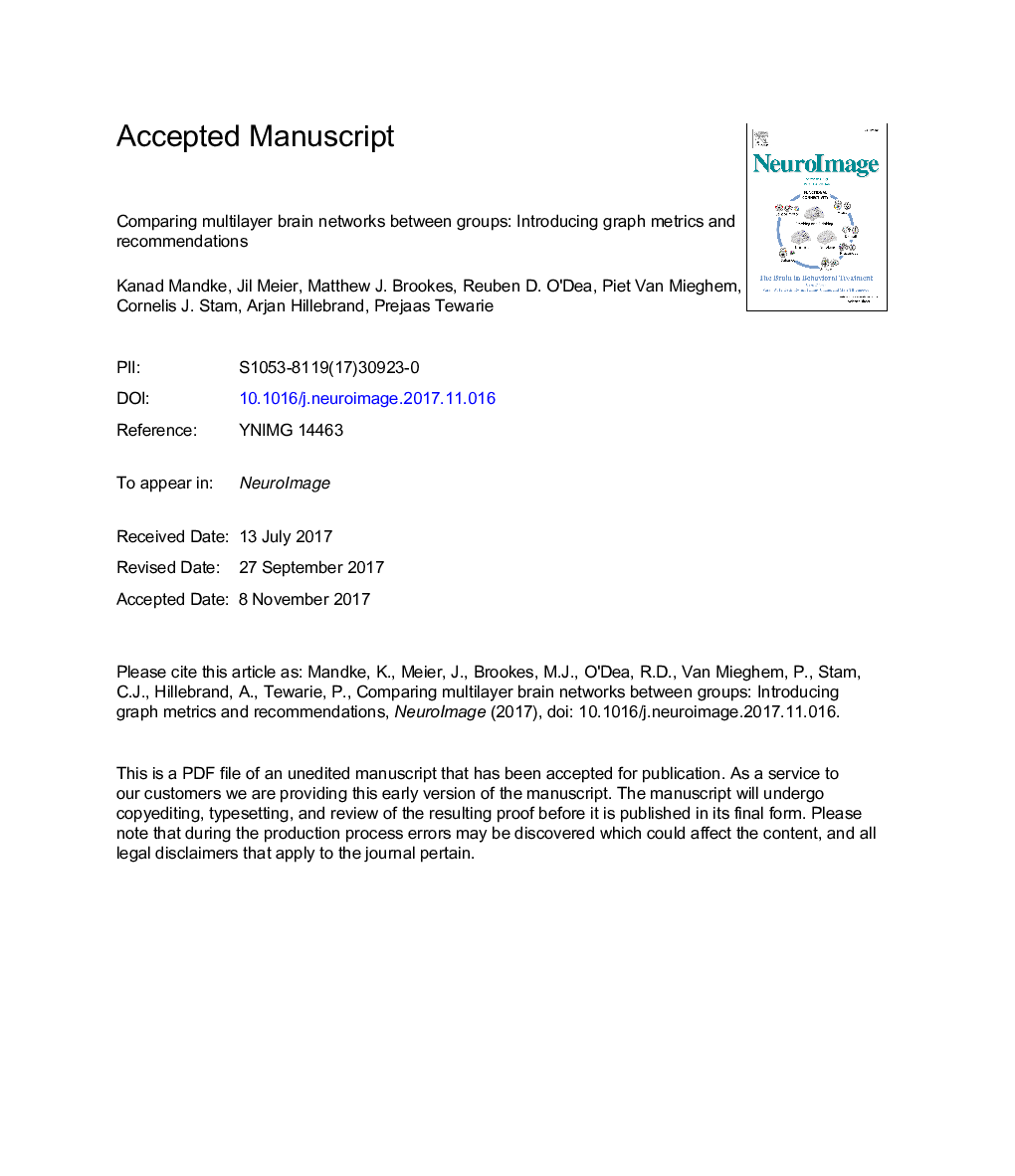| کد مقاله | کد نشریه | سال انتشار | مقاله انگلیسی | نسخه تمام متن |
|---|---|---|---|---|
| 8687376 | 1580844 | 2018 | 37 صفحه PDF | دانلود رایگان |
عنوان انگلیسی مقاله ISI
Comparing multilayer brain networks between groups: Introducing graph metrics and recommendations
ترجمه فارسی عنوان
مقایسه شبکه های چند لایه مغز بین گروه ها: معرفی معیارهای گراف و توصیه ها
دانلود مقاله + سفارش ترجمه
دانلود مقاله ISI انگلیسی
رایگان برای ایرانیان
کلمات کلیدی
اتصال به عملکرد شبکه های کاربردی شبکه های ساختمانی، شبکه های چند لایه نظریه گراف، تصویربرداری چند منظوره، حداقل درخت درختی مقایسه شبکه،
موضوعات مرتبط
علوم زیستی و بیوفناوری
علم عصب شناسی
علوم اعصاب شناختی
چکیده انگلیسی
There is an increasing awareness of the advantages of multi-modal neuroimaging. Networks obtained from different modalities are usually treated in isolation, which is however contradictory to accumulating evidence that these networks show non-trivial interdependencies. Even networks obtained from a single modality, such as frequency-band specific functional networks measured from magnetoencephalography (MEG) are often treated independently. Here, we discuss how a multilayer network framework allows for integration of multiple networks into a single network description and how graph metrics can be applied to quantify multilayer network organisation for group comparison. We analyse how well-known biases for single layer networks, such as effects of group differences in link density and/or average connectivity, influence multilayer networks, and we compare four schemes that aim to correct for such biases: the minimum spanning tree (MST), effective graph resistance cost minimisation, efficiency cost optimisation (ECO) and a normalisation scheme based on singular value decomposition (SVD). These schemes can be applied to the layers independently or to the multilayer network as a whole. For correction applied to whole multilayer networks, only the SVD showed sufficient bias correction. For correction applied to individual layers, three schemes (ECO, MST, SVD) could correct for biases. By using generative models as well as empirical MEG and functional magnetic resonance imaging (fMRI) data, we further demonstrated that all schemes were sensitive to identify network topology when the original networks were perturbed. In conclusion, uncorrected multilayer network analysis leads to biases. These biases may differ between centres and studies and could consequently lead to unreproducible results in a similar manner as for single layer networks. We therefore recommend using correction schemes prior to multilayer network analysis for group comparisons.
ناشر
Database: Elsevier - ScienceDirect (ساینس دایرکت)
Journal: NeuroImage - Volume 166, 1 February 2018, Pages 371-384
Journal: NeuroImage - Volume 166, 1 February 2018, Pages 371-384
نویسندگان
Kanad Mandke, Jil Meier, Matthew J. Brookes, Reuben D. O'Dea, Piet Van Mieghem, Cornelis J. Stam, Arjan Hillebrand, Prejaas Tewarie,
